It’s difficult to forecast with certainty the speed at which climate change will transform our planet’s northern polar region, however researchers are observing that the ice is thinning rapidly, and models predict that ice-free Arctic summers are on the horizon.
Temperatures in parts of the Arctic were six degrees or more above average in February.
In this special episode of Climate Now, we travelled to Tromsø in northern Norway to hear more from sea ice experts at the Norwegian Polar Institute.
The fifth-warmest February on record
Data from the Copernicus Climate Change Service shows that globally, February 2023 was the fifth-warmest on record, with temperatures 0.3° Celsius above the 1991-2020 average.
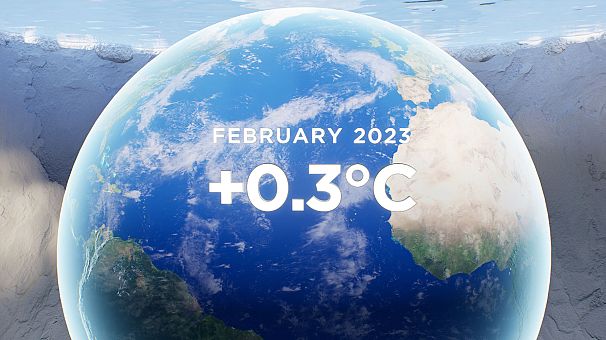
If we look at the temperature anomaly map worldwide we can see a few standout features.
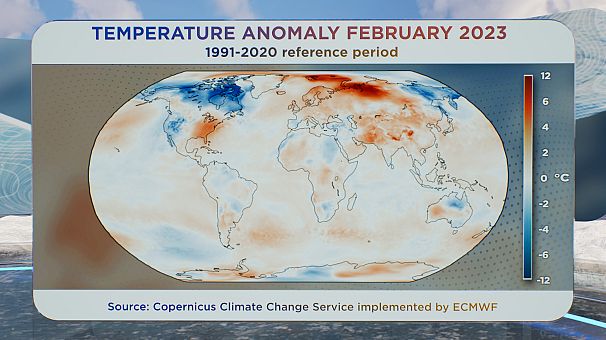
Firstly, in northern Canada and parts of the western US, temperatures were several degrees below average:
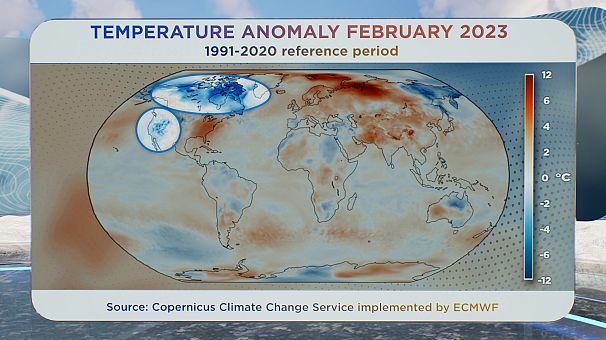
In Europe, it was generally warmer – temperatures for February were 1.2° Celsius above average for the month:
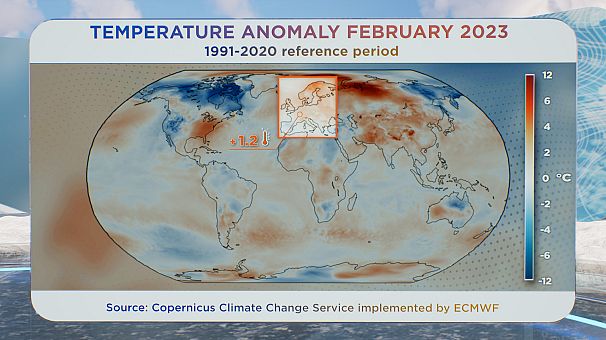
And then, in dark red, above Norway and Russia, temperatures were 6° or more above average in February.
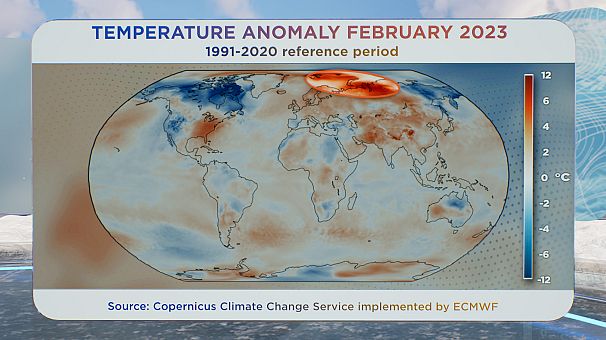
And those warmer temperatures in the Arctic last month come at a time of year when sea ice should be plentiful at the end of winter.
Sea ice extent was at its second-lowest level on record for February, and sea ice concentration was lower than average in the areas shaded in red on the map around western Siberia, and Svalbard.
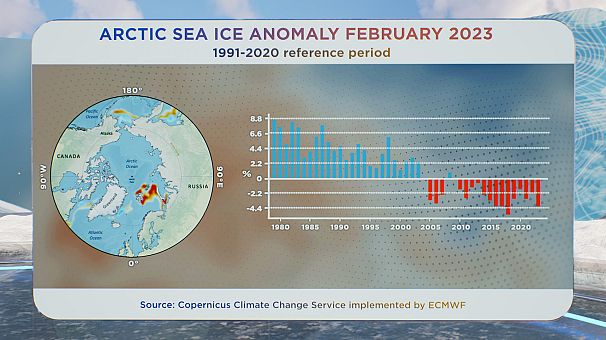
Arctic is warming much faster than global average
At the Norwegian Polar Institute in Tromsø, inside the Arctic Circle, researchers are studying the impact of climate change on the region.
The Arctic is warming three to four times faster than the global average, and sea ice scientist Mats Granskog tells Euronews that he has witnessed the changes with his own eyes
“When I first ventured out there maybe 20 years ago, it was a lot of pack ice – thick, heavy ice,” he says. “Nowadays, some years we have a hard time to actually find a piece of ice, an ice floe to work on. So it’s changed pretty dramatically over the past decades.”
Ice is becoming thinner
Every year the scientists sail to the northeast of Greenland to collect samples on the way to the North Pole – and then bring them back to Tromsø for study. They don’t make it all the way to 90 degrees north every year, it depends on the ice, but in 2022 it was relatively plain sailing.
We roughly had a metre and a half of sea ice at the North Pole last summer. Typically, we would have in the order of three metres of ice 20 years ago.
Dimitry Divine
Sea Ice Researcher, Norwegian Polar Institute
The Arctic sea ice cores are stored at -24°C in had large freezer room, and each ice core represents a snapshot of the Arctic at the time it was sampled.
“This one was taken late July last summer when we reached the North Pole,” Mats shows us. “So we roughly had a metre and a half of sea ice at the North Pole last summer. Typically, we would have in the order of three metres of ice 20 years ago.”
In the frozen lab next door, Dimitry Divine studies how the ice was formed. The major changes he sees are in the age and thickness of the ice.
“The ice is getting thinner and thinner,” he explains. “It won’t be able to survive the summer melt.”
Older type of ice are disappearing
Climate change affects the general age of the ice as well. Researchers distinguish between first-year ice and multi-year ice. The Arctic would normally have a mix of both, but the central Arctic and areas north of Canada traditionally have more multi-year ice. But as it warms, the older ice is disappearing.
“The ice in the Arctic is mostly now dominated by the first-year ice forms,” says Dimitry. “The older types of ice, which would have prevailed for 20, 30 years ago in the central Arctic, they are more or less gone.”
“We see, especially in the western Arctic, the increased amounts of snow, precipitation on the ice throughout the last decade,” he adds. “And that is related with the fact of a warmer and more humid Arctic in general.”
Feedback loops
The Arctic warming is partly due to what are known as feedback loops – one example is that open seawater is darker than ice, so it warms up faster, and accelerates the melt. However, there’s still a lot we don’t master about this polar region.
“Sea ice is dependent on the atmosphere and the ocean below. And it’s a rather complex system to understand. And I guess the big questions are what will the Arctic look like in the future? And that’s a tough one, I think, because we don’t yet fully understand how it’s functioning today,” says Mats.
“The forecasts or our climate models tells us that there will certainly be a time when we can consider the Arctic as ice-free in the summer. But when exactly that will happen, there’s a fair bit of uncertainty, and we don’t know all the feedback in the system. And I sense that we don’t know if it will be just gradual or we will have some kind of abrupt changes which switches the system to a completely new state. And that’s an active field of research: to understand all this feedback mechanism in the system that might actually accelerate the warming.”
Journalist • Jeremy Wilks
Video editor • Jean-Christophe Marcaud
Additional sources • Copernicus Climate Change Service and Norwegian Polar Institute


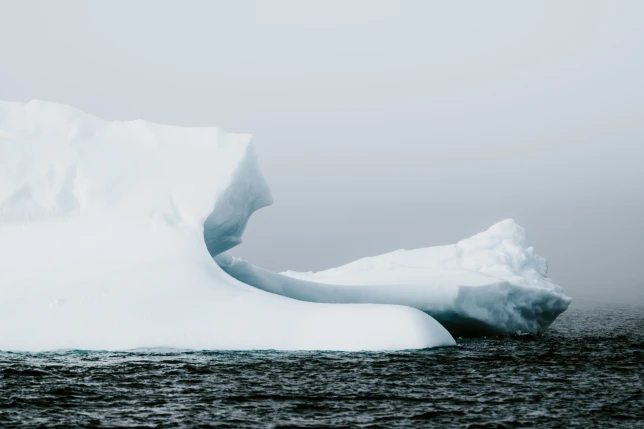


Could be you more specific about the content of your article?